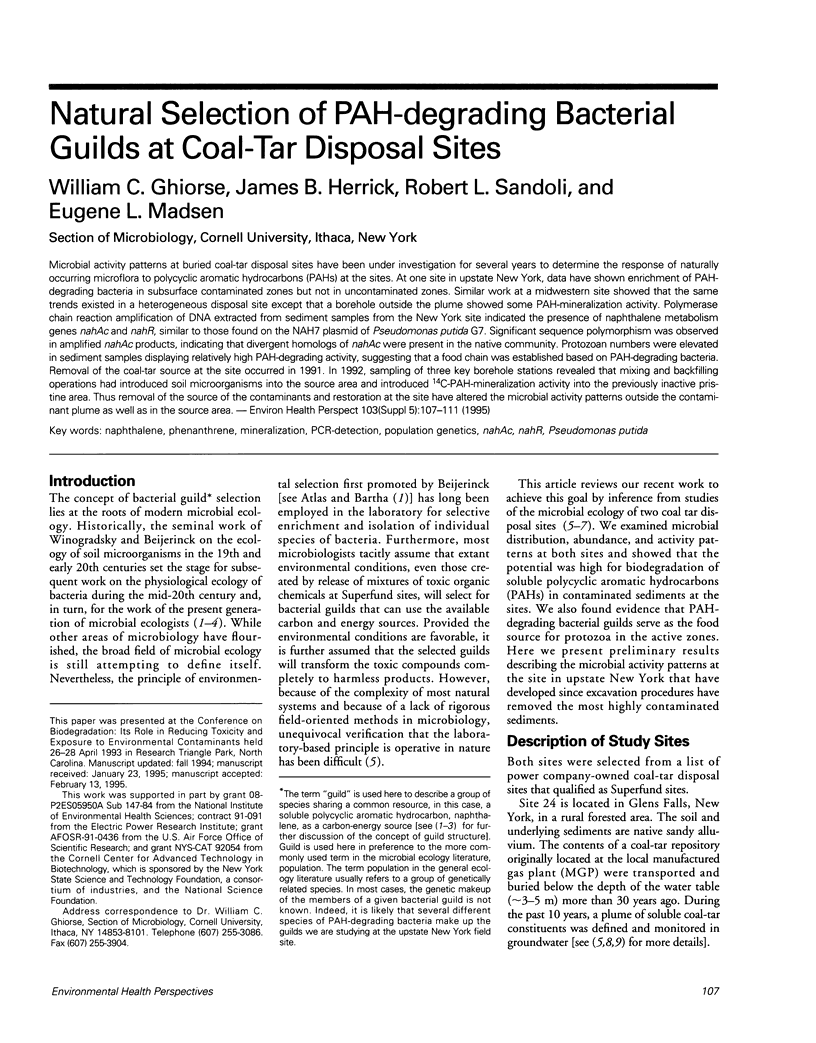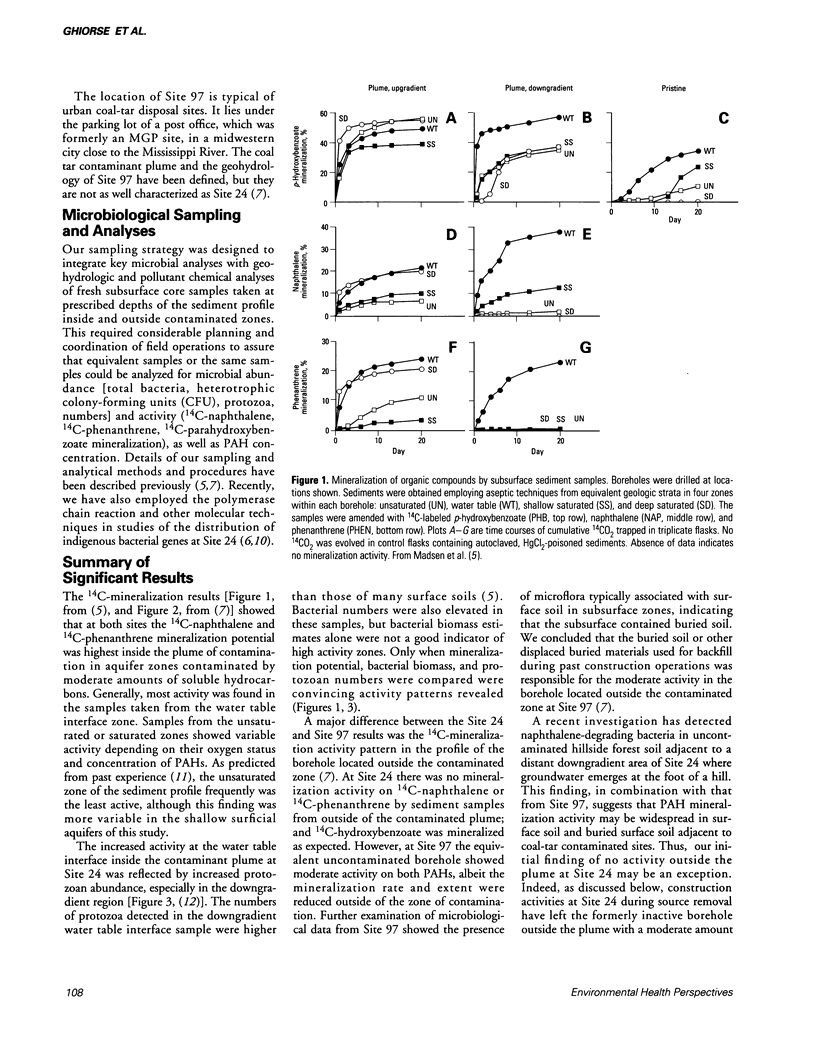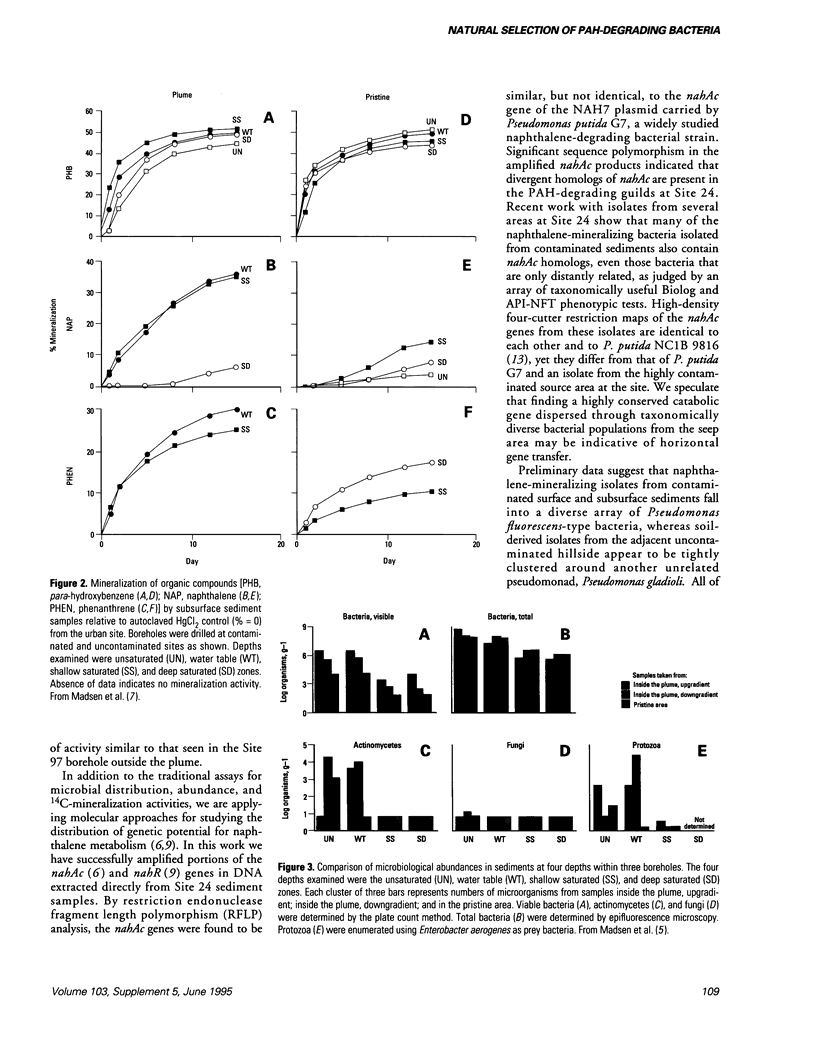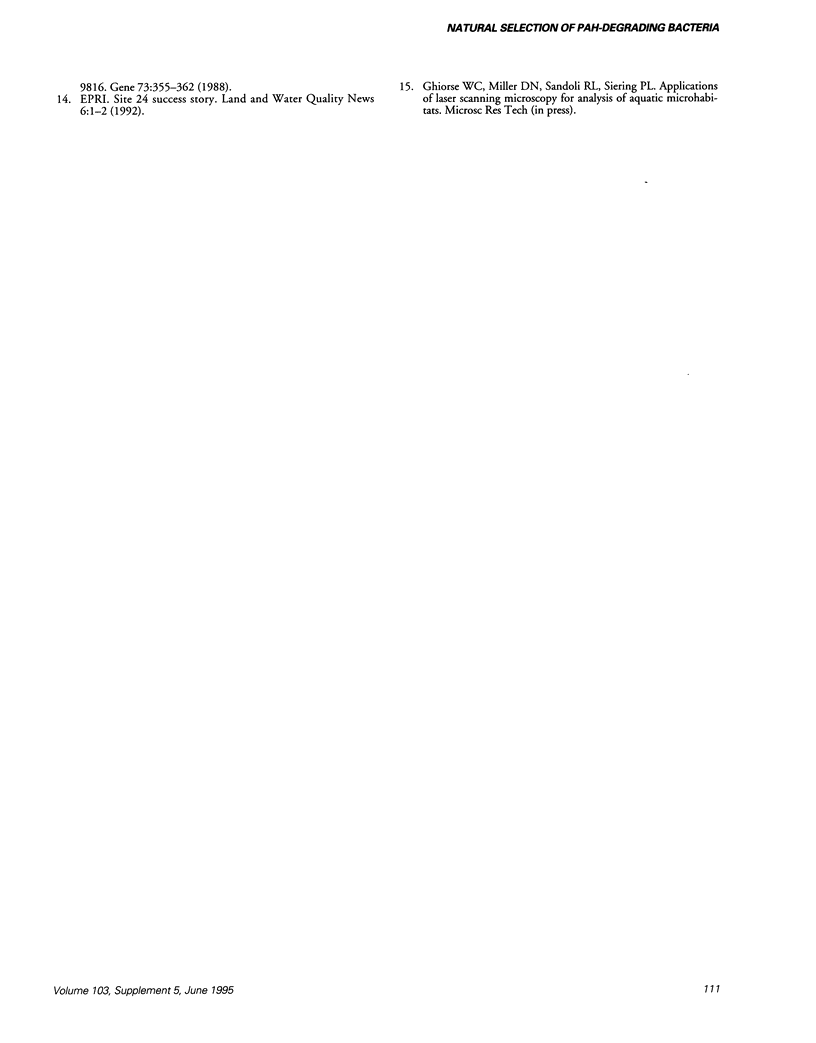Abstract
Microbial activity patterns at buried coal-tar disposal sites have been under investigation for several years to determine the response of naturally occurring microflora to polycyclic aromatic hydrocarbons (PAHs) at the sites. At one site in upstate New York, data have shown enrichment of PAH-degrading bacteria in subsurface contaminated zones but not in uncontaminated zones. Similar work at a midwestern site showed that the same trends existed in a heterogeneous disposal site except that a borehole outside the plume showed some PAH-mineralization activity. Polymerase chain reaction amplification of DNA extracted from sediment samples from the New York site indicated the presence of naphthalene metabolism genes nahAc and nahR, similar to those found on the NAH7 plasmid of Pseudomonas putida G7. Significant sequence polymorphism was observed in amplified nahAc products, indicating that divergent homologs of nahAc were present in the native community. Protozoan numbers were elevated in sediment samples displaying relatively high PAH-degrading activity, suggesting that a food chain was established based on PAH-degrading bacteria. Removal of the coal-tar source at the site occurred in 1991. In 1992, sampling of three key borehole stations revealed that mixing and backfilling operations had introduced soil microorganisms into the source area and introduced 14C-PAH-mineralization activity into the previously inactive pristine area. Thus removal of the source of the contaminants and restoration at the site have altered the microbial activity patterns outside the contaminant plume as well as in the source area.
Full text
PDF




Selected References
These references are in PubMed. This may not be the complete list of references from this article.
- Herrick J. B., Madsen E. L., Batt C. A., Ghiorse W. C. Polymerase chain reaction amplification of naphthalene-catabolic and 16S rRNA gene sequences from indigenous sediment bacteria. Appl Environ Microbiol. 1993 Mar;59(3):687–694. doi: 10.1128/aem.59.3.687-694.1993. [DOI] [PMC free article] [PubMed] [Google Scholar]
- Kurkela S., Lehväslaiho H., Palva E. T., Teeri T. H. Cloning, nucleotide sequence and characterization of genes encoding naphthalene dioxygenase of Pseudomonas putida strain NCIB9816. Gene. 1988 Dec 20;73(2):355–362. doi: 10.1016/0378-1119(88)90500-8. [DOI] [PubMed] [Google Scholar]
- Madsen E. L., Sinclair J. L., Ghiorse W. C. In situ biodegradation: microbiological patterns in a contaminated aquifer. Science. 1991 May 10;252(5007):830–833. doi: 10.1126/science.2028258. [DOI] [PubMed] [Google Scholar]
- Moré M. I., Herrick J. B., Silva M. C., Ghiorse W. C., Madsen E. L. Quantitative cell lysis of indigenous microorganisms and rapid extraction of microbial DNA from sediment. Appl Environ Microbiol. 1994 May;60(5):1572–1580. doi: 10.1128/aem.60.5.1572-1580.1994. [DOI] [PMC free article] [PubMed] [Google Scholar]


